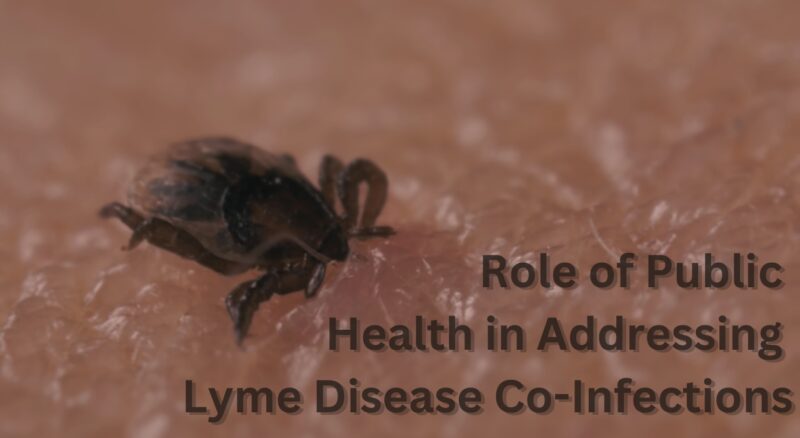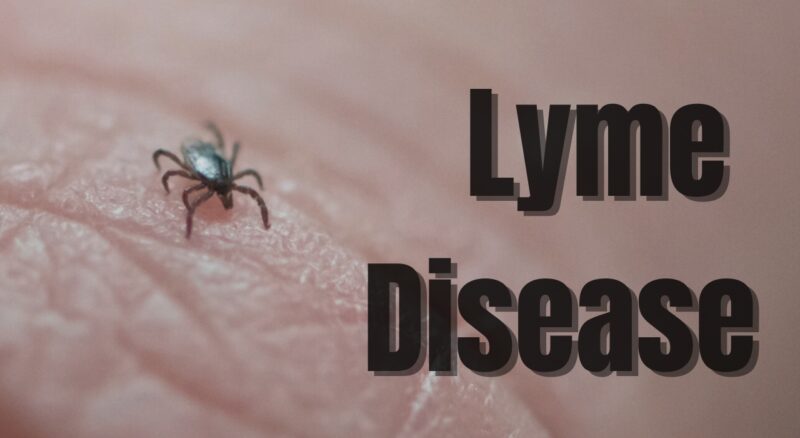Lyme disease, a tick-borne illness, is often associated with various co-infections, which are other diseases that ticks can transmit simultaneously. This interaction makes Lyme disease a complex and sometimes difficult condition to diagnose and treat.
In this post, we delve into the intricacies of Lyme disease co-infections, their symptoms, and their impact on patients’ health. Understanding these aspects is crucial, as it influences treatment approaches and the overall prognosis.
Lyme Disease Explained

Lyme disease, caused by the bacterium Borrelia burgdorferi, is the most common vector-borne disease in the United States. It’s transmitted to humans through the bite of infected black-legged ticks.
- Initial symptoms can include fever, fatigue, headache, muscle and joint aches, and swollen lymph nodes.
- If untreated, the infection can spread to the joints, heart, and nervous system, leading to more severe symptoms.
The Reality of Co-Infections
When a tick bites, it may introduce more than one pathogen into the body, resulting in co-infections. Studies suggest that up to 50% of ticks carrying Lyme disease also carry other pathogens.
- Co-infections can worsen the severity of Lyme disease.
- They can also make the disease more challenging to diagnose and treat, as symptoms may overlap or be attributed solely to Lyme disease.
Babesiosis
One of the most common co-infections with Lyme disease is Babesiosis, a malaria-like illness caused by Babesia microtia.
- The symptoms of Babesiosis can include fatigue, headache, sweats, chills, and dark urine.
- Severe cases may present jaundice, shortness of breath, and low platelet count, among other complications.
Anaplasmosis and Ehrlichiosis
Anaplasmosis and Ehrlichiosis are other common co-infections associated with Lyme disease. Both are bacterial illnesses that affect white blood cells.
- Symptoms can range from mild to severe and can include fever, headache, muscle aches, and fatigue.
- In severe cases, these infections can cause respiratory failure, bleeding problems, and organ failure.
Bartonella

Bartonella species are another group of bacteria that ticks can transmit, leading to a condition known as Bartonellosis.
- Common symptoms include fever, fatigue, headache, and swollen glands.
- In some patients, Bartonellosis can cause severe symptoms such as endocarditis (inflammation of the heart’s inner lining) and bacillary angiomatosis (a vascular proliferative disease).
Powassan Virus
Powassan virus is a less common but potentially severe co-infection with Lyme disease.
- Early symptoms can include fever, headache, vomiting, and weakness.
- The virus can progress to encephalitis (inflammation of the brain) or meningitis (inflammation of the membranes surrounding the brain and spinal cord), which can be life-threatening.
Diagnosis and Testing for Co-Infections
Diagnosing Lyme disease and its co-infections can be challenging. They often present similar symptoms and standard tests might not always detect the pathogens.
- Several laboratory tests can help diagnose these infections, including enzyme immunoassays (EIA), Western blot, and polymerase chain reaction (PCR) tests.
- In some cases, physicians may also base their diagnosis on symptoms and exposure history.
Treatment Considerations
The treatment of Lyme disease with co-infections requires a comprehensive approach. It’s important to treat all pathogens involved to ensure a successful recovery.
- Antibiotics are usually the first line of treatment.
- Antiparasitic medications may be used for co-infections such as Babesiosis.
The Importance of Prevention

Preventing tick bites is the best way to avoid Lyme disease and its co-infections. Measures include using insect repellents, wearing protective clothing, and performing tick checks after being outdoors.
- You can also reduce tick habitats around your home through landscaping.
- It’s important to seek medical attention if you’ve been bitten by a tick or have symptoms of Lyme disease or a co-infection.
Chronic Lyme Disease and Co-Infections
The term ‘chronic Lyme disease’ is used to describe the persisting symptoms like fatigue, pain, or joint and muscle aches in patients after undergoing standard treatment.
- Some experts suggest that chronic symptoms may be due to co-infections that were not initially treated.
- However, the concept of chronic Lyme disease is controversial and not universally accepted within the medical community.
Co-infections Impact on Treatment Outcome
The presence of co-infections can significantly influence the effectiveness of Lyme disease treatments. For instance, patients with co-infections tend to have more severe illnesses, require longer treatment, and are at higher risk of complications.
- A careful and comprehensive diagnosis process is crucial to ensure all pathogens are identified and adequately treated.
- Continuous follow-ups and monitoring are also important for managing co-infections and avoiding treatment complications.
Emerging Co-Infections
As tick habitats expand due to changes in climate and human encroachment into previously uninhabited areas, new co-infections continue to be discovered.
- Borrelia miyamotoi and Borrelia mayonii are examples of newer species identified as causing Lyme disease-like symptoms.
- Recognizing and studying these emerging pathogens will help improve diagnosis and treatment.
Immune System Response to Co-Infections

Co-infections can affect the body’s immune response to Lyme disease. Multiple pathogens in the body can confuse the immune system and exacerbate the disease’s symptoms.
- This can make the disease progress more quickly or become more severe.
- Understanding the interplay between Lyme disease and its co-infections can provide insights into the body’s immune response and inform more effective treatment strategies.
Impact of Co-Infections on Mental Health
Co-infections can contribute to neurological and psychological symptoms in patients. Some people experience memory problems, depression, and changes in personality or mood.
- Healthcare providers must recognize these potential mental health implications and provide appropriate support and intervention.
- Mental health professionals also have an essential role to play in the multidisciplinary care team for these patients.
The Role of Genomics
Advancements in genomic science are paving the way for a deeper understanding. With genomics, we can track the evolution of pathogens and study their genetic makeup.
- This knowledge can help in the development of more accurate diagnostic tools and targeted treatment methods.
- Furthermore, it provides insights into the complex interplay of multiple pathogens within the host, revealing how they can collectively influence the severity and progression of the disease.
Vaccination and Co-Infections
While there is currently no approved vaccine for Lyme disease in humans, multiple candidates are in different stages of development and clinical trials. However, the presence of co-infections can complicate the efficacy of a potential vaccine.
- Vaccination strategies should consider the impact of co-infections on the immune response.
- Developing a comprehensive vaccine that could protect would be a significant step forward.
Role of Public Health in Addressing Lyme Disease Co-Infections

Public health organizations play a crucial role in mitigating the impact of Lyme disease and its co-infections.
- They contribute to the collection of epidemiological data, facilitating the study of disease prevalence and distribution.
- Furthermore, these organizations play an instrumental role in educating the public on prevention measures and symptom recognition, which can lead to earlier diagnoses and better outcomes.
Integrative Approaches to Treatment
Integrative medicine, which combines conventional medicine with complementary therapies, can offer a more holistic approach to treating.
- Practices such as dietary modifications, stress management, and herbal medicine may enhance traditional treatments, alleviating symptoms and improving patient well-being.
- However, these approaches should be applied under the guidance of a healthcare professional to ensure safety and efficacy.
In the realm of holistic healthcare, an innovative approach has emerged, showing promising results in the realm of Lyme disease co-infection symptom management by harnessing the principles of German Biological Medicine.
Final Thoughts
Lyme disease co-infections represent a significant aspect of management. Understanding their symptoms, complications, and treatment approaches is key to improving patient outcomes.
Expanding our knowledge on this complex topic can help us better navigate the complexities of the disease and co-infections, ultimately striving towards improved patient care and prevention strategies.

